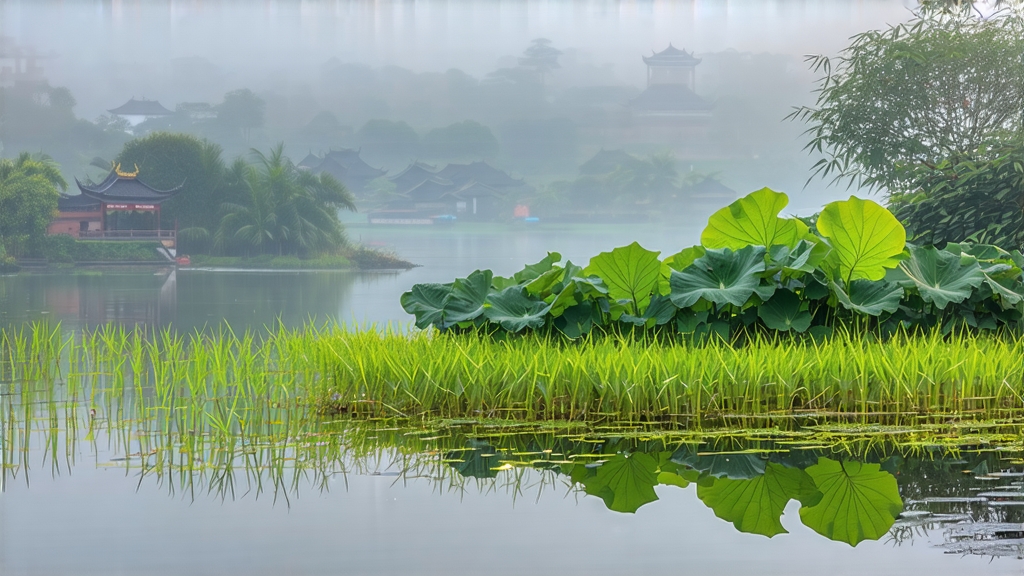
Longjing, literally “Dragon-Well,” is the most celebrated among China’s more than one thousand green-tea identities. Its fame rests not on marketing alone but on a convergence of imperial patronage, microclimate, and a craft that has been polished for fifteen centuries. To understand why a single sip can taste like sweet spring water, roasted chestnut, and freshly cut grass all at once, one must follow the leaf from Tang-dynasty legend to the modern glass tumbler.
Historical roots
The earliest written record appears in Lu Yu’s Classic of Tea (760 CE), which lists a tea from the “Stone Mountain of Qiantang” judged “excellent for clearing the mind.” By the Song era, Buddhist monks at Longjing village on Hangzhou’s West Lake were already pan-firing leaves in iron woks to stop oxidation, a technique that set green tea apart from the compressed cakes then dominating trade. When the Qianlong Emperor visited in 1751, he was so moved by the fragrance drifting from eighteen mother trees that he conferred imperial status on the tea; the same trees still stand, fenced but leafing every April. European maritime reports of 1848 mention “Lung-ching” among the six teas most coveted by London merchants, proof that globalization began long before container ships.
Terroir and cultivars
West Lake is a drowned river valley whose granite slopes retain daytime heat while nightly lake mist rehydrates the bushes. The soil is acidic quartz sand rich in selenium and barium—trace elements that translate into a silkier mouthfeel. Within the officially protected 168 km² core zone, four micro-areas are ranked:
- Shífēng (Lion Peak): highest elevation, longest fog duration, pronounced orchid note.
- Méijiāwǔ (Mei Family Hollow): sheltered basin, leaves yield a creamy texture.
- Wēngjiāshān (Weng Mountain): southern exposure, higher catechin content, brighter liquor.
- Hǔpáo (Tiger Running Spring): mineral-rich spring water feeds the roots, enhancing sweetness.
Farmers plant mainly the traditional Longjing #43 clone—selected in 1972 for its early budding and tolerance to spring frost—but heritage bushes of the “Old Tree” (群体种 qúntǐ zhǒng) remain prized for slower growth and layered aroma. The two can be distinguished by sight: #43 leaves are slimmer, almost pine-needle shaped, whereas Old Tree blades are broader with a serrated edge like willow.
Harvest calendar
The picking window is brutally short. “Before Qingming” (pre-ming, 清明前) refers to leaves plucked before 4 or 5 April when only the bud and the first unfolding leaf have reached 2.5 cm. One kilogram of finished pre-ming Longjing requires 60,000 such sets, all snapped by thumbnail between 6 a.m. and 10 a.m. while dew still guards against bruising. “Before Grain Rain” (yuqian, 雨前) extends the season to 20 April and offers a slightly stronger, more affordable tea. After that, the same bushes are left alone so they can recover for next year; any later picking is sold simply as “West Lake green” and cannot legally bear the Longjing name.
Craft: the eight motions of pan-firing
Within minutes of plucking, the fragile cells must be deactivated. The master—always titled 师傅 shīfu—heats a bare iron wok to 280 °C, then brushes it with a tuft of fresh tea oil so the surface gleams like obsidian. The choreography follows eight hand motions, each with a poetic name:
- 抓 grab: initial toss to shock enzymes.
- 抖 shake: moisture evaporation.
- 搭 press: flattening the bud against the wok to create the signature sword shape.
- 拓 spread: even heat distribution.
- 甩 cast: removing trapped steam.
- 推 push: further elongation.
- 扣 buckle: fine-tuning the ridge.
- 磨 polish: final gloss.
Temperature is lowered in three stages, 280 °C → 220 °C → 100 °C, over twenty-five minutes. When done correctly, the leaf moisture drops to 6 %, the edges show a faint yellow “rice crust,” and the aroma recalls roasted edamame. A single master handles only 250